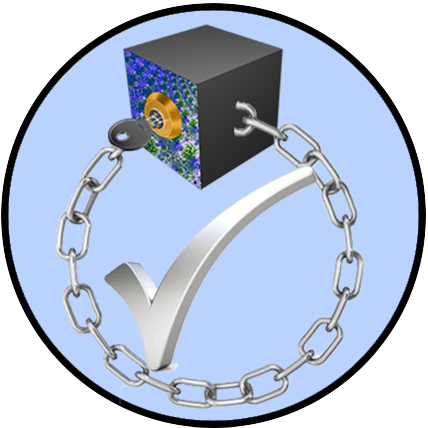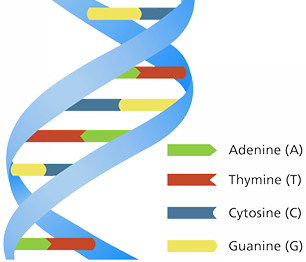
| Contents | |
|---|---|
 Data Neutral Architecture Data Neutral Architecture |
Integrates Quantum Proof Security and Quantum Secure Trust Services |
 Enterprise Systems Legacy Enterprise Systems Legacy |
Solutions to legacy security and structural limitations |
 Future Proofing Future Proofing |
Challenging the entrenched IT curriculum |
 Learning from Nature Learning from Nature |
DNA is the simplest and most flexible data architecture |
 Legacy Schemas Legacy Schemas |
Comparing Crystal with DNA structure |
Portalz Data Neutral Architecture (DNA)
Portalz DNA is a revolutionary and perfected synergy of application architecture, impenetrable security and guaranteed trust services.
Portalz DNA delivers core benefits unobtainable by conventional architectures, including:
- Structural unification of data
- Ease and flexibility of data definition and storage
- Unprecedented level of service and UI code re-use
- Rapid Application Development by configuration without schema change and coding
- Instant visibility of configured changes
- Rapid production publication without roll-out
- Application wide security integration
- Application wide trust change control and tracking
Portalz DNA responds instantly to real world changes in storage requirements and allows customisation per record or entity. When new products with new features require storage this can be delivered rapidly at low risk.
Portalz DNA architecture seamlessly and transparently integrates Quantum Proof Security and Quantum Secure Trust Services.
Portalz DNA is a post-quantum future proof Enterprise Foundation.
Enterprise Systems Legacy
Portalz has solutions to legacy security and structural limitations.
that created them.”
Legacy software architecture and database engineering has limitations inherited from our relational database history. Many of our architectural and security paradigms have been adopted as 'the way IT is done' and are embedded in IT curriculum.
Very rarely does the accepted norm get challenged.
Our team has investigated core assumptions in our search for solutions and have discovered the cause of numerous problems assumed to be 'the cost of doing IT'. In the course of 20 years of R&D our revolutionary solutions have challenged the status quo.
Core assumptions investigated:
- Table per object relational database architecture
- Database services delivery (search, list, report, edit etc)
- Application and database security
- Legacy encryption and key management
- Decentralised blockchain requirement
With the advent of Quantum Computer threats to all encryption based security and rising demand for Trust Platforms, legacy IT problems are dramatically highlighted.
We needed to start from the ground up because conventional norms cannot deliver future requirements!
Future Proofing Enterprise Systems
Portalz solutions to entrenched legacy problems have evolved over 20 years of R&D and commercial enterprise platforms delivered with our revolutionary architectures and technologies.
Our database architecture is similar to biologic Database, natures flexible database structure. By comparison, legacy databases are rigid and crystalline.
Our Data Neutral Architecture is our primary catalyst for future trust platforms:




Portalz Database architecture seamlessly integrates revolutionary Quantum Proof Data Security and Quantum Secure Blockchain Trust.
The resulting architecture is a perfect synergy of:
- ERAD storage configurability
- ERAD requirements delivery
- Unified Database data services
- Unified security and trust integration
- Quantum proof data security
- Quantum secure trust guarantee
Engineers remain focused on client deliverables as unprecedented service re-use; security and trust manifest transparently.
Portalz revolutionary concepts and paradigms challange the accepted IT curriculum and lay the foundation for a robust, unlimited and secure IT future.
Learning from Nature
Portalz DNA is a ERAD configurable Trust Platform Architecture similar to biologic Database.
simplest, most powerful and flexible database schema.”
Yet the 'accepted norm' in database architecture is more like crystals; rigid, brittle and resistant to change. Like the foundations of a skyscraper, the building (platform application) must conform to the exact structure of tables, columns and relationships. Design changes are slow, expensive and risky.
What makes the difference?
Conventional table-per-object database schemas fix the data structure in tables, columns (fields) and relationships of the core schema. To change the data structure the core schema must be changed, requiring corresponding service and UI code changes, unit testing and server roll-outs. This can be compared to crystal structure that is determined by its molecular shape.
Our Data Neutral Architecture defines data structure without the need to change the core schema. To change structure data is changed in the DNA schema. Generic service and UI code does not need to be changed. This can be compared to biologic DNA structure that remains the same for all living beings yet allows infinite variability and flexibility.
 compare
compare

Legacy Table-per-Object Schemas
Schema design and changes are a well known bottleneck in legacy enterprise architecture. What is not so well known are the stifling effects caused by legacy schema growth.
Legacy database schemas must grow with every new entity and property!
Conventional enterprise schemas typically contain hundreds or thousands of tables with unique columns and relationships. As a schema grows past one hundred tables the following symptoms emerge:
- Structural fragmentation. This causes increasing difficulty for engineers to understand the schema.
- Data fragmentation. Data is split into pigeon holes each requiring dedicated access code.
- Exponential rise in complexity. Each new table and column multiplies complexity.
- More difficult to secure. Greater complexity means less integrity.
The negative effect of these symptoms on enterprise system development cannot be overstated. There is a long list of enterprise dinosaurs that can no longer evolve as the cost and risk of further development is no longer viable.
